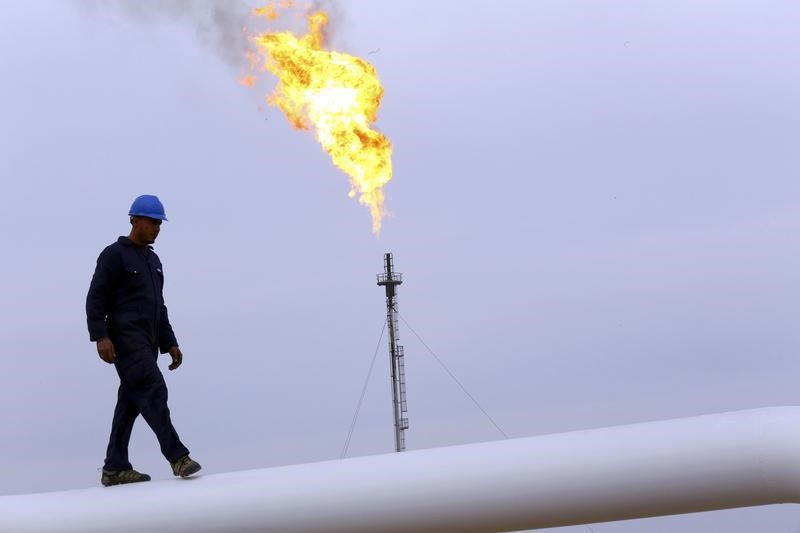Investing.com — It’s the same script that plays out before each OPEC+ meeting and we’re seeing it again.
Crude prices rose as much as 4% Thursday, paring the 7% loss from three previous days of trading, as market participants braced for the possibility that OPEC+ would announce another output cut at its meeting this weekend — against bets for a stay.
And there’s possibly only one reason for that to happen: a disgruntled Saudi Arabia that wants to fight short-sellers and bring a barrel back to $80 or more as soon as possible.
It was one reason for the late-week comeback in oil prices despite a dismal weekly supply-demand report on oil released by the U.S. government.
Another was the broad rally in commodities triggered by the biggest tumble in a day since mid-March, after the passing of the U.S. debt ceiling agreement through Congress. It was a deal of convenience between Democratic President Joe Biden and his chief Republican rival Kevin McCarthy to avoid an unprecedented U.S. debt default — one that left some of the warlords in both their parties deeply unhappy.
The U.S. was higher by 4.5 million barrels during the week ended May 26, the Energy Information Administration, or EIA, said in its Weekly Petroleum Status Report, versus market expectations for a draw of around 1.1M barrels on the average for last week.
In the prior week to May 19, the EIA reported a crude deficit of 12.5M barrels — the most in six months, or since the week ended November 25.
On the fuel side, the EIA reported mixed trends in weekly stockpiles of gasoline and distillates.
On the front, there was a draw of 0.207M barrels versus forecasts for a deficit of 0.369M and the previous weekly decline of 2.053M. Automotive fuel gasoline is the No. 1 U.S. fuel product.
With , the rise was 0.985M barrels, versus expectations for a draw of 0.118M and the prior week’s deficit of 0.562M. Distillates are refined into , diesel for trucks, buses, trains and ships and fuel for jets.
The just-ended week was an important one for the oil market as it preceded the longer weekend that culminated with Monday’s Memorial Day holiday that unofficially flags off the U.S. summer travel season that relates to higher oil demand. The EIA’s reporting period for weekly oil supply-demand, however, cuts off on Fridays, meaning there could still be heavier consumption numbers in the agency’s next report.
New York-traded West Texas Intermediate, or WTI, crude settled up $2.01, or nearly 3%, at $70.10 per barrel. In the previous session, it hit a four-week low of $67.07.
London-traded was up $1.70 or 2.3%, to $74.30 by 14:37 ET (18:37 GMT). The global benchmark for oil hit a four-week low of $71.53 on Wednesday.
“It’s the pre-OPEC ass-covering act by the oil market, if you ask me,” said John Kilduff, partner at New York energy hedge fund Again Capital.
“There’s nothing in this weekly EIA report that warrants the sort of price comeback we have today. That said, hedging ahead of an OPEC meeting is totally legit and that’s what we’re seeing today. The Saudis are still mad with oil bears for having dragged a barrel back below $70 this week and they might want to go with another production cut they’d largely carry on their own shoulders. But also remember that when they slash output and the others don’t or don’t do as much, it’s the Saudis who risk conceding market share.”
OPEC+ groups the 13-nation Saudi-led OPEC, or Organization of the Petroleum Exporting Countries, with 10 other oil producers steered by Russia.
Last week, Saudi Energy Minister Abdulaziz bin Salman issued a warning to the short sellers in oil, hinting at further cuts. But Russian President Vladimir Putin later said oil prices were approaching “economically justified” levels, indicating that more output reductions might not be required in Moscow’s opinion.
Despite the concerns of oil bears over the possibility of further production cuts, OPEC+ has actually had limited success over the past two months in trying to push crude prices up with output reductions.
The alliance announced a 1.7M-barrel-per-day cut in April, on top of an October undertaking to shed 2M barrels daily.
After the April cut was announced, crude prices only went up for two weeks, before turning lower over four weeks, erasing some 15%. The earlier pledge to cut 2M barrels fared worse, resulting in just a few days of gains before prices tumbled to 15-month lows in March.
Read the full article here


